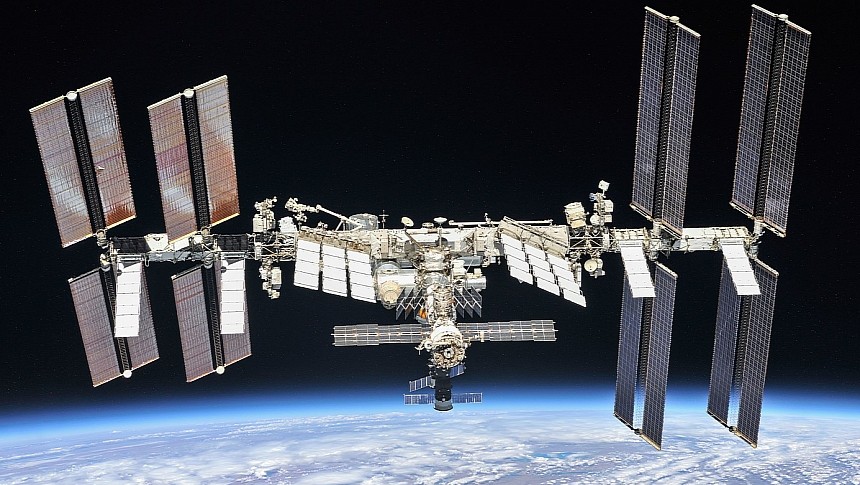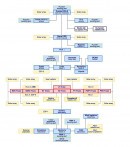With Russia's military occupation of Ukraine soon to stretch into its second year, relations between the Russian Federation and the West are at an all-time low following the collapse of the Soviet Union in 1991. But at least in terms of space exploration, NASA and Roscosmos seem set to put geopolitics aside in the short term, at least as far as the International Space Station is concerned.
In a report first dropped by Reuters and corroborated by The Moscow Times, a tentative agreement between Roscosmos, NASA, and the ESA ensures this contingent will continue to service ISS missions in low Earth orbit until at least 2025. At this point, Roscosmos seems dead-set on preparing to launch its own orbital space station. Dubbed the Russian Orbital Service Station, this mission is due to launch via the new and highly secretive Angara A5 heavy-lift launch vehicle sometime in 2027.
Should plans stick to what's been agreed upon, this would only give Roscosmos a 24-month grace period between services aboard the International Space Station and the tentative launch of their national space station. But when Russia packs up its equipment and disembarks the ISS for good, it'll also be taking its fleet of human-rated orbital spacecraft along with it. Stockpiles of Soyuz MS spacecraft that once served as the backbone of ISS resupply missions will one day soon be transferred to work exclusively with the Russian Orbital Service Station.
It's a blow, no doubt, agitating an ISS coalition that needs all the help it can get to keep the astronauts aboard supplied with food, water, and vital equipment. Of course, private aerospace contractors like Boeing, Sierra Space, and SpaceX intend to pick up the slack via the Dragon and Starliner space capsules as well as the Dream Chaser space plane. But with two of those three vessels yet to make their maiden flight, that looming exodus deadline by 2025 is approaching at a rate that might make some in the industry sweat.
With the future of international cooperative efforts in space now very much in jeopardy, the latest agreement between NASA and Roscosmos, whose governments seem perenially at odds with each other, is one of the last vestiges of goodwill between the two nations since the start of the Russian invasion of Ukraine in February 2022. In the vacuum of space, hundreds of miles above the combat raging in Eastern Europe, the agreement could be the final remotely positive correspondence between the West and the Russian Federation for many years to come.
In the meantime, the ISS is still slated to be decommissioned and de-orbited no later than the very early 2030s. Whether the Russians can deploy their own space station before ISS says its farewells remains to be seen.
Should plans stick to what's been agreed upon, this would only give Roscosmos a 24-month grace period between services aboard the International Space Station and the tentative launch of their national space station. But when Russia packs up its equipment and disembarks the ISS for good, it'll also be taking its fleet of human-rated orbital spacecraft along with it. Stockpiles of Soyuz MS spacecraft that once served as the backbone of ISS resupply missions will one day soon be transferred to work exclusively with the Russian Orbital Service Station.
It's a blow, no doubt, agitating an ISS coalition that needs all the help it can get to keep the astronauts aboard supplied with food, water, and vital equipment. Of course, private aerospace contractors like Boeing, Sierra Space, and SpaceX intend to pick up the slack via the Dragon and Starliner space capsules as well as the Dream Chaser space plane. But with two of those three vessels yet to make their maiden flight, that looming exodus deadline by 2025 is approaching at a rate that might make some in the industry sweat.
With the future of international cooperative efforts in space now very much in jeopardy, the latest agreement between NASA and Roscosmos, whose governments seem perenially at odds with each other, is one of the last vestiges of goodwill between the two nations since the start of the Russian invasion of Ukraine in February 2022. In the vacuum of space, hundreds of miles above the combat raging in Eastern Europe, the agreement could be the final remotely positive correspondence between the West and the Russian Federation for many years to come.
In the meantime, the ISS is still slated to be decommissioned and de-orbited no later than the very early 2030s. Whether the Russians can deploy their own space station before ISS says its farewells remains to be seen.



















